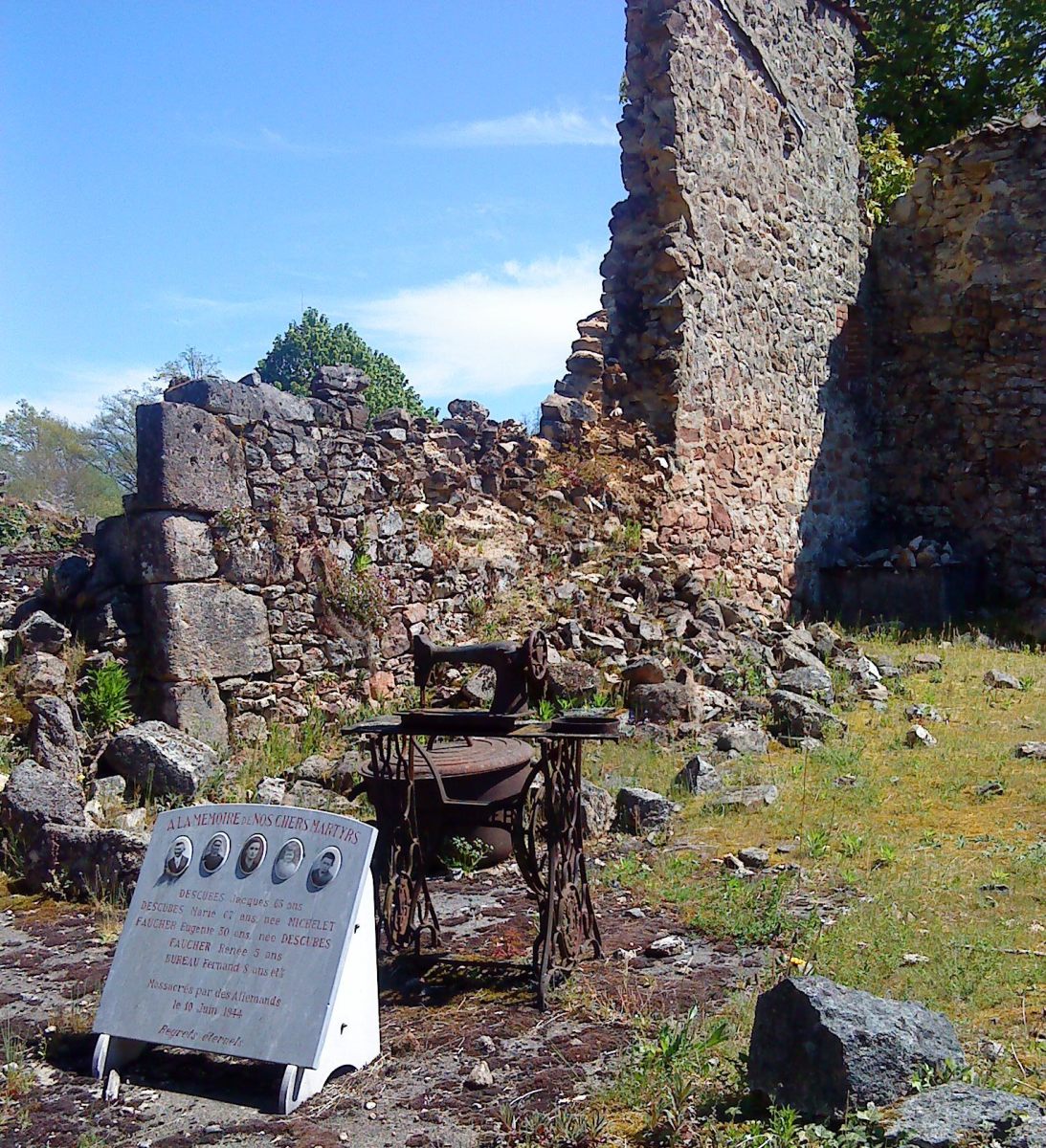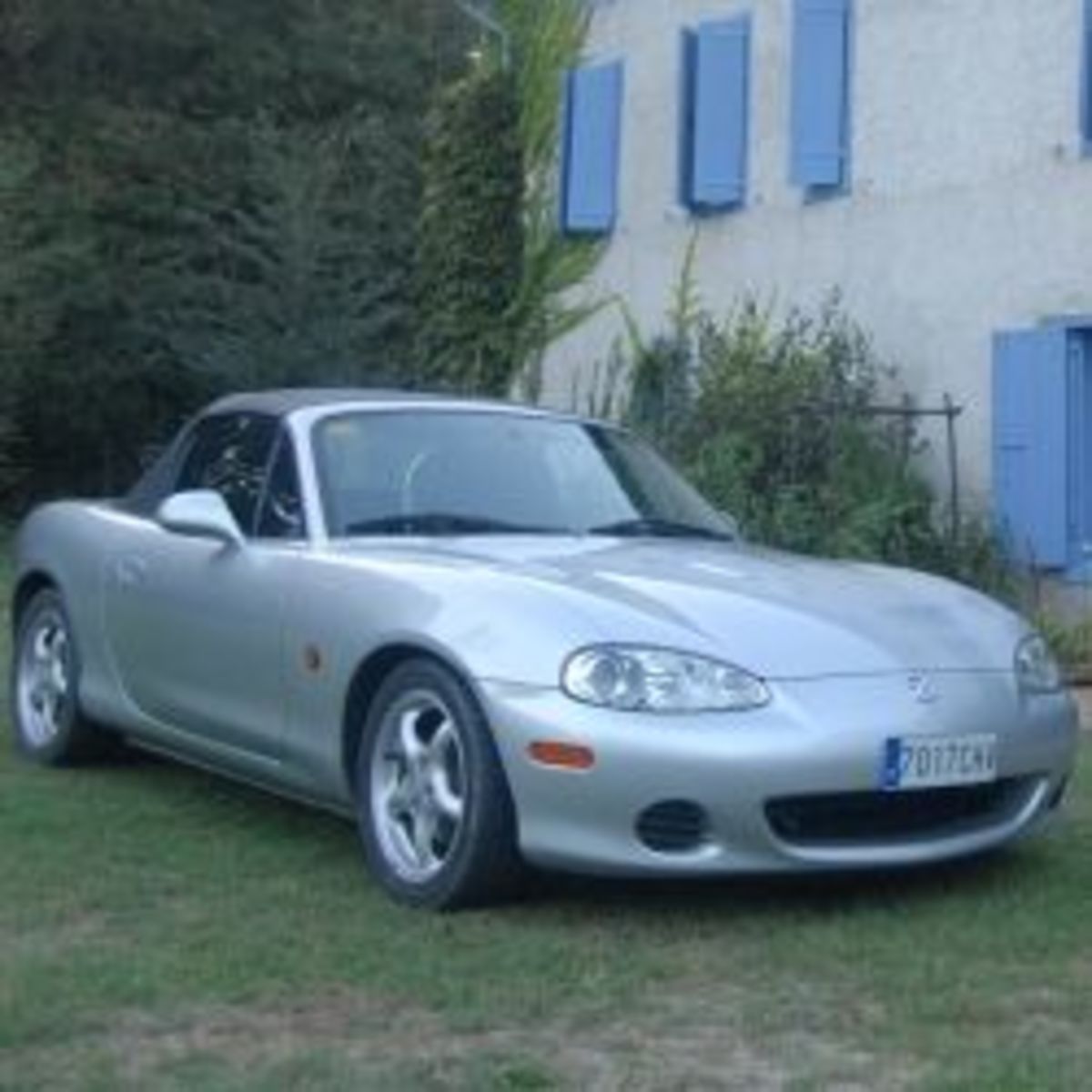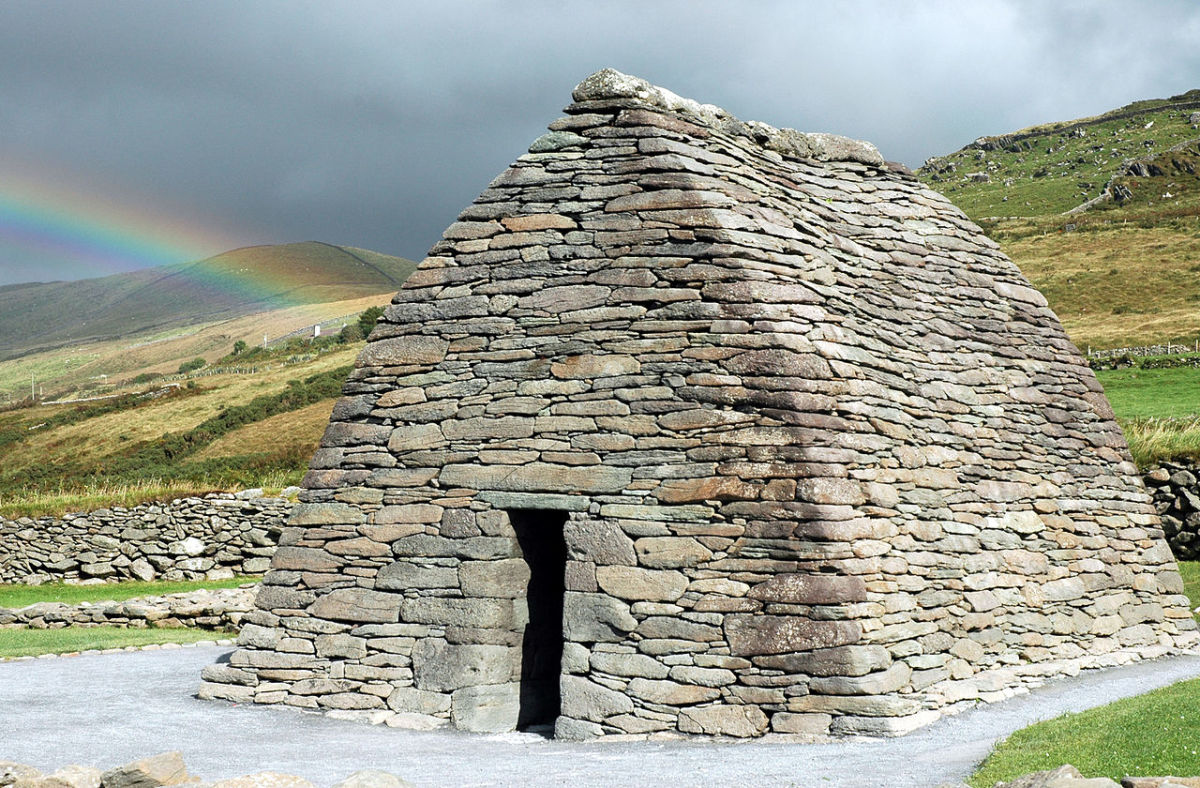Oradour sur Glane - Martyr Village
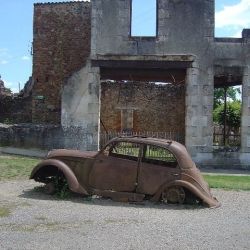
The Sadness and Heartache of Oradour-sur-Glane
2014 is the 70th Anniversary of Oradour-sur-Glane. It is now 70 years since the buildings were burned and the inhabitants killed. Why was the small French town of Oradour-sur-Glane burnt to the ground on the 10th June 1944, and 642 of its people massacred?
The sleepy French town of Oradour-sur-Glane, nestling in Limousin, the rural heartland of France, suffered from the Nazi occupation of northern and central France but the people expected the war to end and life to continue as normal. This didn't happen in Oradour.
Instead, on one Saturday afternoon an horrific attack was carried out on this quiet town by soldiers of the Der Fuhrer Regiment of the 2nd Waffen-SS Panzer Division, Das Reich. Why?
The motive for the seemingly unprovoked attack on a defenceless village in the farming district of the Haute-Vienne remains a mystery, and to this day nobody knows why Oradour was targeted, but it is a fascinating and sad story.
Today the ruins of Oradour have been preserved as a reminder of the the horrors and heartache of war.
This is the Story of Oradour-sur-Glane, South West France
Hold a minute's silence on June 10 2014 in their memory. the residents were massacred.
Will You Visit Oradour-sur-Glane for the 70th Anniversary? - Come together in awe and respect
Will you be able to come to the 70th anniversary of Oradour-sur-Glane?
Oradour-sur-Glane: Read More About the Martyred Village - By Sarah Farmer

Francois Holland and Joachim Gauck Visit Oradour-sur-Glane - The French and German presidents visit Oradour together
Joachim Gauck maked history on Wednesday 4th October 2013 by being the first German leader to visit the ghost town of Oradour-sur-Vayres. Accompanying the presidents were two of the few survivors of the massacre, Robert Hebras aged 88, and Jean-Marcel Darthout. What an ordeal it must have been for these two men. How many ghosts reside in Oradour for them? Too many I suspect.
There are ghosts to lay to rest for President Gauck too; he is recorded as saying "The Germany that I have the honour of representing is a different Germany from the one that haunts memories." The Daily Mail In response Holland acknowledged his visit and said that it was time to move on.
At the end of the tour, the three men shown below embraced.
10th June 1944
70th Anniversary of the massacre at Oradour-sur-Glane
You Will Be Shocked
At the martyrdom of the victims of the Nazi regime in France
Oradour-sur-Glane, the martyr village, has been preserved so that we can remember and condemn. It's a bitter reminder indeed of the horrors of war and the inhumanity of humankind. But Oradour is about more than this, it reminds us in the hopes that we will never repeat it again.
On the 10th of June 1944 a unit of Waffen SS of the 'Das Reich' division encircled the village and rounded up 646 men, women and children. The town was destroyed and General Charles de Gaulle declared that it would be preserved in that state. Every year a ceremony held on the 10th June in Oradour-sur-Glane ...... 'lest we forget'.
"Those who can't remember the past are condemned to relive it". The words of G Santan
The Beautiful Countryside Will Not Prepare You for the Horrors To Come - This is a Green and Pleasant Land
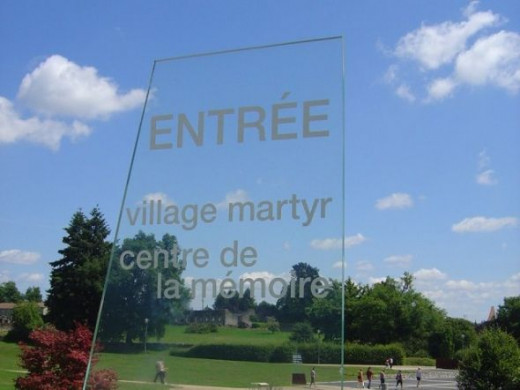
Oradour is set in the beautiful Limousin landscape of oak woodlands and wild flower meadows. The gently rolling hills are studded with tiny hamlets and small villages and towns. Villages and towns just like Oradour-sur-Vayres.
You'll approach the centre through landscaped parkland with attractive shrubs and trees set in carefully maintained lawns. The signs that guide you to the centre are understated. Made from transparent perspex they hover between existing and not existing. Interupting the landscape as little as possible.
Then you will be confronted by the centre itself. Read more about the design of Oradour-sure-Glane.
This Stark Entrance Leads to the Oradour Exhibition Centre - An Education in the Waste that is War
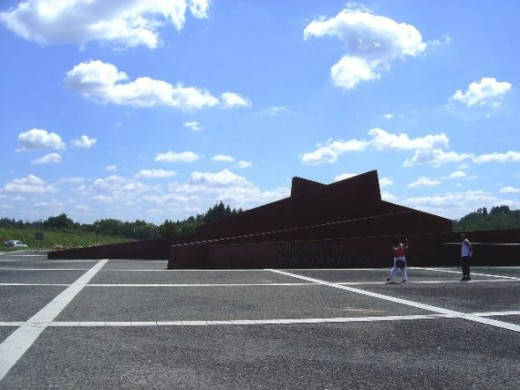
The visitor centre, which opened in May 1999, is huge, solid, angular and uncomfortable. Slabs of rusting metal tower over you as you enter between them and descend the long flights of steps.
From here you pass into a suave and open reception area. You can use the library and shop, or pass straight into the exhibition. This exhibition sets the political scenes and outlines the events leading up to the massacre.
The centre and the landscape around it was designed by Yves Devraine, and architects Jean-Louis Marty and Antonio Carrilero. They have carefully built the centre into the hillside, so that only the great, triangular walls of the entrance are visible as you first approach the area. It is both part of the landscape, and a mark on it. A symbol of the violence that took place in Oradour, and of the sadness and heartache that remains.
Today the site is maintained by the Conseil General, the Rector of the Academy of Limoges, and the Centre de la Mmoire.
Where is Oradour-sur-Glane? - In Limousin, South West France
Oradour was a Small Commune
Full of very ordinary people
A commune in France is a bit like a Parish in England; a small administrative area, often just a few villages, looked after by a Mayor and a few local councillors.
The commune of Oradour-sur-Glane had about 1,574 inhabitants in 1937 and it was made up of twenty farming villages. The town of Oradour itself had about 300 residents, but from 1939 onwards, Oradour-sur-Glane had hosted Spanish, Alsatian, Moselle and Jewish refugees.
Oradour was so out of the way that it was almost not affected by war. Although the occupying army confiscated produce, there was still enough food for the local population. As far as the local people were concerned, it was just a matter of time until the army left and Oradour would have recommenced with its trading and gentle rural life.
As you walk around the ruined village, you can see just how ordinary it was. There are many hairdressers, butchers, bakers and normal craft workers. The shops, garage, houses all testify to the humdrum, everyday task of living.
Das Reich Waffen-SS Was an Armed Unit
An armored division and a self-proclaimed elite.
The Das Reich Waffen-SS was formed in 1939, from armed SS units. They took part in the annexation of Austria and Sudetenland, (they were then called the SS Division Verfgungs-Truppe (S.S. VT)), and in February 1944 they became known as the Das Reich 2nd armored Waffen-SS division. Although it went through several changes it remained active until May 8th, 1945.
It was first used during the attack on Poland, in September 1939 and after that it was the instrument of cruel repression, carrying out massacres and attacks in Belgium, France, Yugoslavia and in the Soviet Union.
The Waffen-SS of Das Reich, after a retreat, was regrouped in France, in April 1944 under the command of SS General Lammerding. He was an early member of the Nazi party and an expert at quashing guerrilla fighters. Once in south west France they carried out a regime of violent suppression.
In the case of Oradour, it was Lammerding who issued an Order of the day on 10th June for the massacre, citing the need to counter the establishment of a "Communist government" in the region as justification.
This part of France remains left wing with a strong Communist tendency to this day.
Residents Were Burned Here - Stand Back - Please give them space
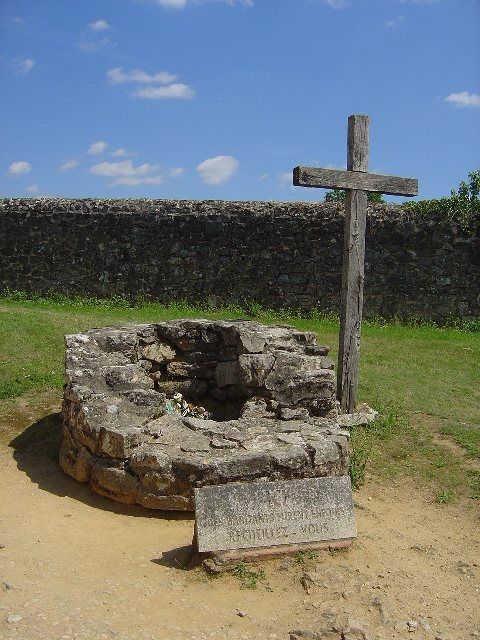
This is the message written in stone at the foot of this cross. How hard to believe that these events could have taken place on such a sunny afternoon. The peace and the quiet of the village is, in itself, shocking.
Why?
The mystery of Oradour
Why was Oradour, a quiet little town deep in the agricultural heartland of France, targeted for such savage treatment by the Nazi's? Nobody really knows the answer to this, but there are several theories, mostly revolving around retribution.
Michael Williams wrote on his site Oradour that the story of Oradour is 'Not as it seems'. On the face of it the massacre seems to be in retaliation for several possible attacks on the Nazi soldiers, but that is just the start of the mystery. M Williams points out that the person blamed for the massacre does not exist.
It is also thought that the real target for the attack was Oradour-sur-Vayres, a village about half an hour away, and the attack on Oradour-sur-Glane was a tragic case of mistaken identity.
Will the truth ever be known?
For the 'full' story, see Online Encyclopedia of Mass Violence Oradour, June 10th, 1944: A Nazi Massacre in Occupied France
The Background of the Massacre - And the rise of the French Resistance movement
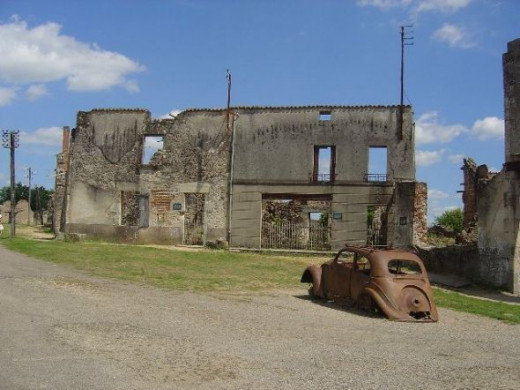
Northern France had been under enemy occupation since Marshal Henri Philippe Ptain signed the armistice, to France's shame, on 22nd June 1940 handing over power to Hitler, who finally imposed direct rule in November 1942. Over that time the French resistance grew and the occupying troops tried to quash resistance mercilessly.
This was the atmosphere in which the massacre at Oradour took place.
How It All Started - Saturday 10th June 1944
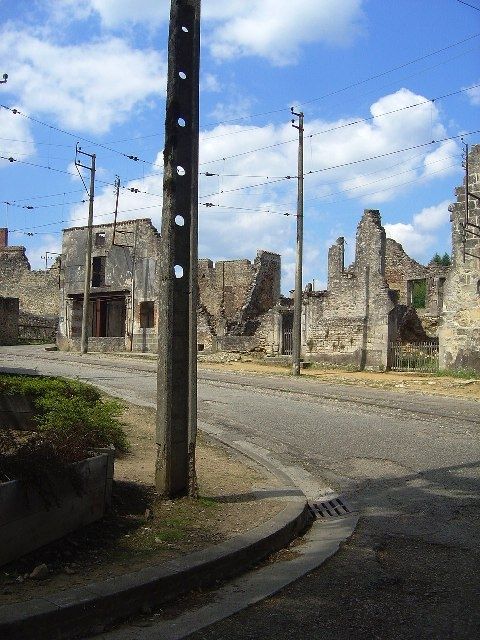
On Saturday 10th June 1944 the soldiers arrived at the town en mass in the early afternoon, taking the unsuspecting population by surprise. They were shocked but not dismayed and only a few people thought to escape at this point.
The SS officers flushed everyone from their homes, they searched for arms and they had orders to shoot anyone who tried to leave, along with the sick and disabled. Then they separated out the women and children from the men.
Men Were Massacred and Burnt by the Nazis Here - Remember them
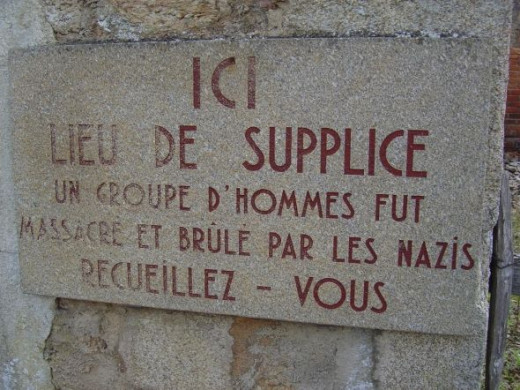
The men were herded into barns, garages and other buildings, where they waited. The attack was beautifully organised. An explosion gave the signal to fire and the soldiers opened up with machine gun fire. All the men were killed except five. They waited and finally escaped to tell the tale.
The Women and Children Were Burnt Alive in the Church - Pray for them
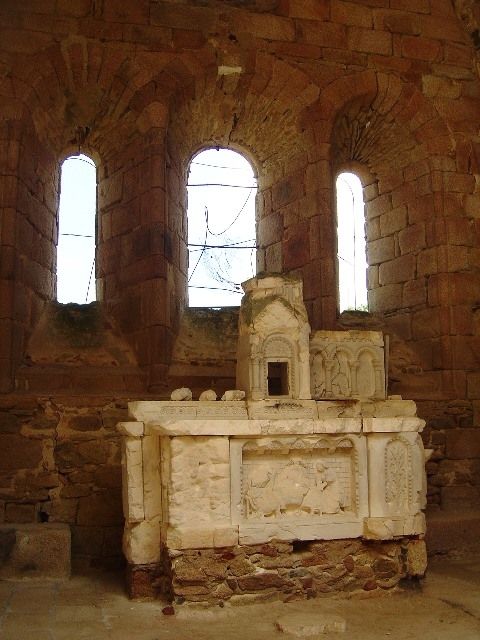
The women and children under 14 waited in the church. There were over 400 of them. A box was then placed in the church which was exploded. The people suffocated in the black smoke. Only one woman escaped.
Every Picture Tells a Story - And this story is such a tragic one

The remains of a child's tricycle lie on the floor of the church. It is mangled and rusted now, but serves as a reminder of all the children who lost their lives at Oradour.
The Empty Streets of Oradour-sur-Glane - Is it true that the birds don't sing in Oradour?
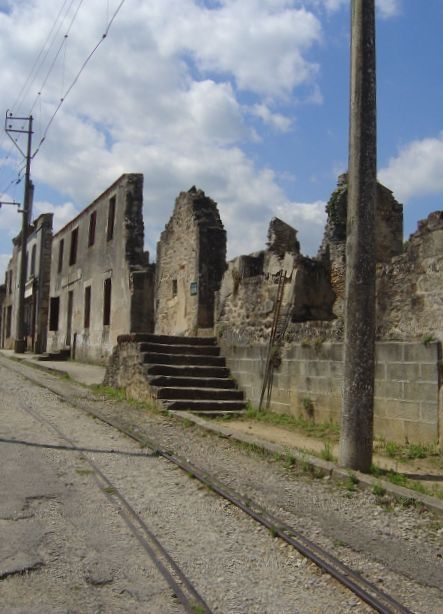
The villagers who arrived home that evening on the train were driven away and during the night the Waffen SS looted and burned the town. They feasted on the food and wine that they found there.
The next day residents braved the presence of the soldiers to search for their missing friends, neighbours and relatives. The task was hard because most of the bodies had been burned and only 10% were recognisable. It took a long time to even count the dead. Eventually the bodies were buried in mass graves by first aid workers, mostly from the surrounding towns and villages.
Now, the streets are empty and silent, appart from the tourists. You can still see the tram lines and wires. The trams would have taken people to the nearby towns.
The Singer Sewing Machines Survived - It's the smallest things that touch the heart
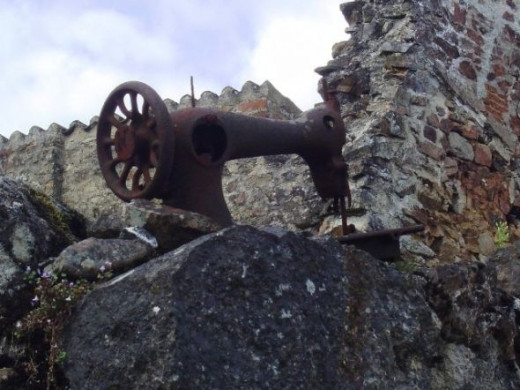
Oradour was burned to the ground
The town was devestated, largely burned to the ground. Some of the walls of the houses remain, the fireplaces, some cooking pots and other metal items. In almost every house there remains a Singer sewing machine - a sad reminder of the ordinary domestic tasks that the families would have been engaged in at the time of the massacre.
The Hands That Held These Scissors ...... - You can see the objects that these people used and cherished
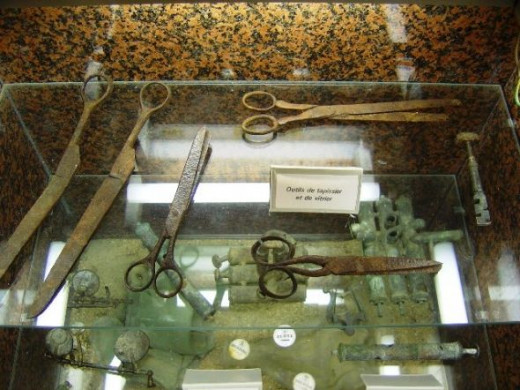
Just on the outskirts of the village, on the way to the cemetery, there's a building that houses the objects found in the village. This building is, like the entrance to the visitor centre, grim, massive and uninviting. It is solid, windowless and constructed from concrete and is underground. You enter one of the dark doorways and make your way down steps into the large, gloomy space below.
Here you'll find glass display cases with all manner of objects, from crucifixes to scissors.
The Cemetery Tells the Tale
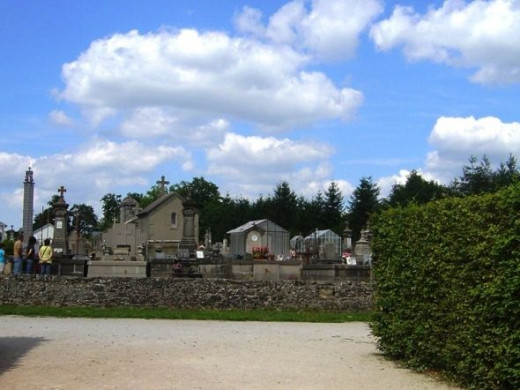
In France, every village, no matter how tiny, has a cemetery, and Oradour-sur-Vayres is no exception. The cemetery is just outside the village and it was here that the victims of Oradour-sur-Glane were buried.
Along the back wall of the cemetery are ten black tablets bearing the names of those who died.
A lantern of the dead, lanterne des morts, watches over the graves. These are tall stone structures, found mainly in the south west area of France, inside which a light could be hoisted which would shine out from piercings at the top. The light calls the living to pray for the dead.
Many of My Oradour Images Are on Gifts and Memorabilia
Keep or give them in this anniversary year of Oradour-sur-Glane
"Lest we forget" - Make sure you remember Oradour, especially on this important anniversary. Take a look at my shop for mementos and memorabilia that will help to bring home the sadness and waste of war. Three are so many beautiful gifts to choose from - stickers to aprons, phone cases to T Shirts.
Why not take a look and help to spread the word?
How Should The Fallen Be Remembered?
Are the D Day memorial services fitting?
Harold Nash, 2nd World War Veteran, Tells His Moving Story - How should the fallen be remembered?
Every now and then a member of the public takes part in a show on Radio 4 and it moves the nation. On Saturday 7th June 2014 just such a moment occurred.
Harold Nash told the nation the moving story of how he, aged just 19, was amonst only three survivors out of 21. He talks about the 23 year old man who faced death when there was no parachute for him.
Most moving of all was Harold's description of three women in mourning from the 'enemy' country who offered him bread. He had, Harold said, tried to kill them and their loved ones.
Harold paints a vivid pictur of the waste of war and suggests that remembering the fallen with pomp and ceremony is not the way it should be. Listen to the moving account that touched the heart of a nation.
Retribution
Justice or revenge?
Should the SS Soldiers Stand Trial?
Should the murderers be prosecuted even now?
Should seven elderly members of the Das Reich division still alive in Germany be put on trial? An attempt to gain justice as made at a military tribunal in 1953. In Bordeaux 65 of the surviving soldiers (from the c. 200 soldiers involved) were brought to trial but but some could not be extradited from new East Germany, and fourteen of the others were from Alsatia and so were French nationals, albeit of German extraction.
in the end only twenty of the soldiers were found guilty but they served less than five years in prison for their crimes.
Should Soldiers Be Tried for War Crimes? - What do you think?
Should the SS members be put on trial even now?
Dark Tourism
Dark Tourism - France leads Europe in remembrance tourism
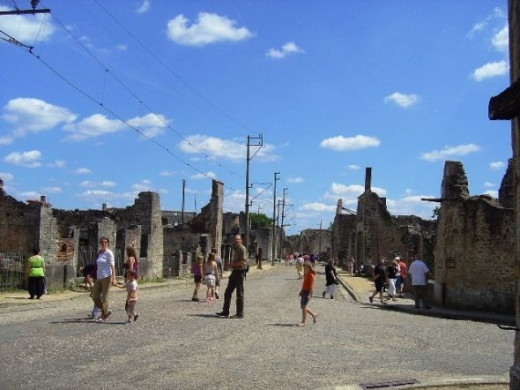
Believe it or not France is the top tourist destination in the world and it's quickly becoming tops for remembrance or war tourism.
Last year, 2011, remembrance tourism brought around twenty million visitors to France, and interest in war history, battle sites and cemeteries is rising, despite the passage of time.
The first national conference on rememberance tourism was hosted in 2011 the French government.
Serge Barcellini, archive director at the defence ministry said “This is a tourism of memories, of pilgrimages, of remembrance of commemorations”. This is true of the visitors that flock to Oradour every year.
The Museum of the Resistance in Limoges - Opened January 2012
A new museum openedin 2012 to bear witness to the resistance of the occupation of France during World War II.
- Le muse de la Rsistance
The Museum of the Resistance in Limoges - Ville de Limoges
Read more ... - La Croix
Read more ....
Wish You Were There? - Make a virtual pilgrimage
Oradour-sur-Glane Memorial Centre
Oradour Centre de la Memoire
Visitor Information
Opening Times
Open 7 days per week
- 1st Feb - 28th Feb open from 9h - 17h
- 1st march - 15th May open from 9h - 18h
- 16th May - 15th September open from 9h - 19h
- 16 September - 31 October open from 9h - 18h
- 1st November - 15 December open from 9h - 17h
Closed from 1-th December - 31 January
Last entry one hour before closing
Entry Fees for the Visitor Centre
- Normal tariff 7.60 euros
- Reduced tariff 5.20 euros
- Family entry 22 euros (2 adults + 2 children or more)
- Groups 6 euros per person (minimum 20)
- Guided tours for groups 8 euoros per person (I free for every 10 paying)
- Free for children under 10
Free entry to the village
Additional Information
- Audio guides in French, English, German, Spanish adn Italian
- Libary
- Education service
- Documentation centre
Contact details
Tel: 05 55 43 04 39
Fax: 05 55 43 04 31
Web site: www.oradour.org
Visit Oradour - Useful links
- Oradour Visitor Centre
Take a look at the Visitor Centre Website - Tourist Office
Office de Tourism Oradour-sur-Glane
How to Get to Oradour
Transport between Oradour-sur-Glane and Limoges
From Limoges airport: There are cheap flights from Britain with Ryanair. Get great Ryanair deals without getting ripped off: (Advice on how to avoid Ryanair traps)
From Limoges train station: You can take the Number 12 bus. From Limoges station the bus leaves at 7.55am 12.35pm and 18.23pm. From Oradour back to Limoges the times are 7.00am, 11.55 am and 17.45 PM. The journey takes about half an hour. (Please note, this information was accurate on 5 June 2012, but you must check before planning your trip by e-mail: contact.transports@cg87.fr or hautevienneencar@cg87.fr
The easiest way is to travel by car. You can hire a car from the airport and the station. Oradour is about twenty minutes from Limoges.
You can contact the Tourist Information Office, see link above, for further information.
Lanterne des Morts at Oradour-sur-Vayres - The Lantern of the dead
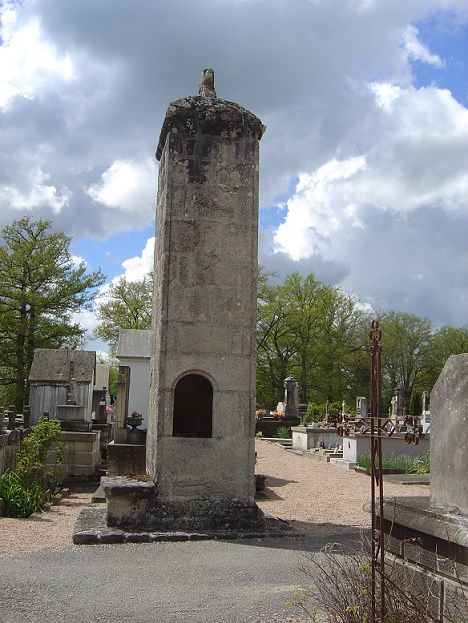
Lanterns of the Dead
Lanterns of the Dead (or lanternes des morts) are small towers normally built in stone that often mark a cemetery - although not always. You'll come across them in central and South West France but there is a concentration of them in Haute-Vienne, Limousin. Seven of the existing 30 lanterns are in the Haute-vienne and 19 or the 54 lanterns that have now disappeared were thought to have been in Haute-Vienne. They have an opening at the top and a light is placed there.
The Lanterne of Oradour - watches over the dead in the cemetery. This one is square, they are also often round, and you can clearly see the opening at the base where the lamp would be lit and then raised up to the top with a pulley.
The commune of Oradour have kept the 12th century Lanterne in the cemetery (it apparently lacks a 'pavillion' for the lamp but I'm not sure what that is) and they have also constructed a modern Lantern made from concrete showing just how important these lanterns were for the region.
Lest we forget
Have You Been To Oradour Yet?
Visit Oradour?
Where Did I Get My Information? - Links to my sources
- Oradour
Good information about Oradour - CASE STUDY: Oradour, June 10th, 1944: A Nazi Massacre in Occupied France
From the Online encyclopedia of Mass Violence - Holland and Gauck visit Oradour-sur-Glane
This historic visit took place on 4th September 2013
The Holocaust, the War in France, the Resistance and Related links - Oradour is not the only town to suffer
- Holocaust Denial: An Important Conversation
Holocaust denial is on the increase - Le muse de la Rsistance
This museum has been established to illustrate the values and solidarity that the citizens of Limousin brought to the Resistance during the Second World War. It is dedicated to all those who sacrified themselves to defend the values of the French Re
© 2012 Barbara Walton


